Some national treasures recognized in October, 2012
Monday, 22/10/2012 09:25 (GMT+7)
Prime Minister Nguyen Tan Dung on October 1 issued a decision recognizing 30 objects as national treasures (1st phase), including drums, tanks, statues and books that have historical value.
These are the first national treasures recognized in Vietnam under the Law on Cultural Heritage:
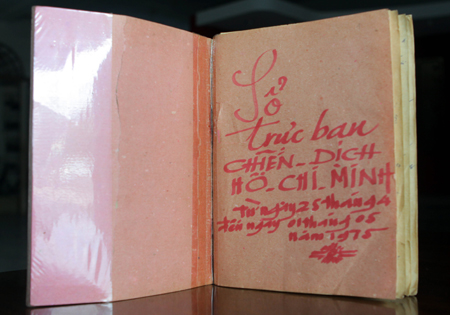 |
|
A notebook reporting on the Ho Chi Minh Offensive from April 25 to
May 1, 1975, currently being kept at the Military Zone 7 Museum
in Hanoi, is one of 30 national treasures. |
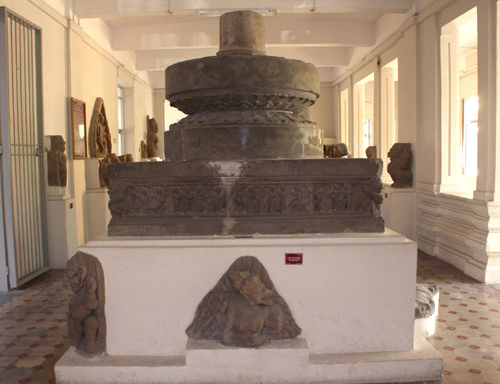 |
|
Tra Kieu altar (Champa culture 192 – 1832), currently at
the Champa Sculpture Art Museum in Da Nang. The altar,
a typical symbol of the royal citadel of Champa in Tra Kieu,
was discovered in Tra Kieu, Duy Xuyen, Quang Nam province. |
 |
|
Tara Bodhisattva Statue, currently being kept at the Champa
Sculpture Art Museum in the central city of Da Nang, is the
largest bronze statue of Champa art, at 1.14 meters high.
The statue was discovered in 1978 in Thang Binh district,
Quang Nam province. |
 |
|
My Son E1 altar is currently being kept at the Champa
Sculpture Art Museum in Da Nang. It was discovered
in My Son relic, Duy Xuyen district, Quang Nam province. |
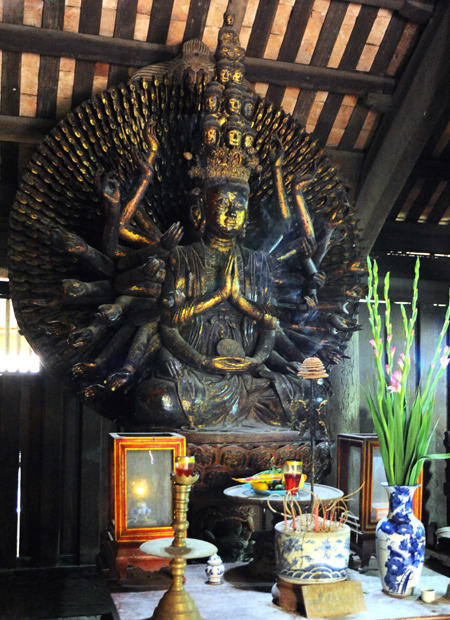 |
|
Statue of Buddha with a thousand eyes and hands was
sculpted in 1656. It is 3.7 meters in height, 2.1 meters in
width and 1.15 meters in thickness. The statue has 11 heads,
42 large hands and 952 small hands. It is currently being
kept at But Thap pagoda in Thuan Thanh District in
the northern province of Bac Ninh. |
|
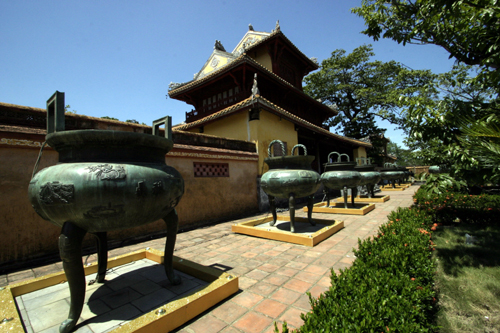
|
|
“Cuu Dinh” (The Nine Tripod Cauldrons of the Nguyen Dynasty
1802 – 1945) are a set of nine bronze censers, vessels used for
burning incense, in the Hue ancient citadel. The nine censers are
different from each other, symbolizing the difference in the personality
of the nine emperors of the dynasty. The nine censers were started to
be cast in winter of 1835 and completed in March 1st, 1837. They are
currently kept at the Hue Royal Antiquities Museum, managed by the
Center for Hue Monuments Conservation. |
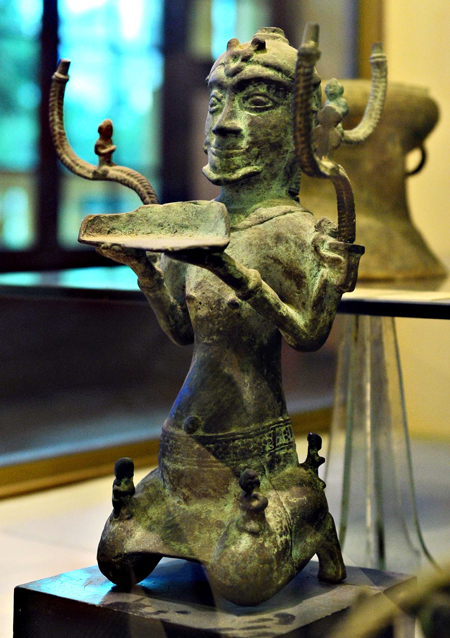 |
|
Bronze lamp in the shape of a kneeling man was discovered in 1935
in an ancient tomb in Lach Truong, Thanh Hoa province. It is 40 cm
in height, 30 cm in length, 27 cm in width and 1.9 kg in weight. It is
currently being kept at the Vietnam National Museum of History in Hanoi. |
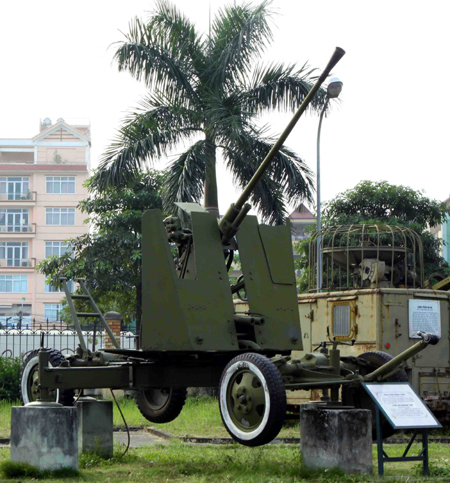 |
|
A 37mm anti-aircraft gun was manufactured by the Soviet Union and
was used by the Vietnamese People's Army in the historical Battle of
Dien Bien Phu in 1954. it is currently being kept at the Air-Defence
and Air Force Museum in Hanoi. |
 |
|
A MiG 21 F96 aircraft, numbered 5121 was used by Vietnam
People's Air Force in the historical battle of “Dien Bien Phu in
the air” in 1972. It is currently being kept at
the Vietnam Military History Museum in Hanoi. |
|
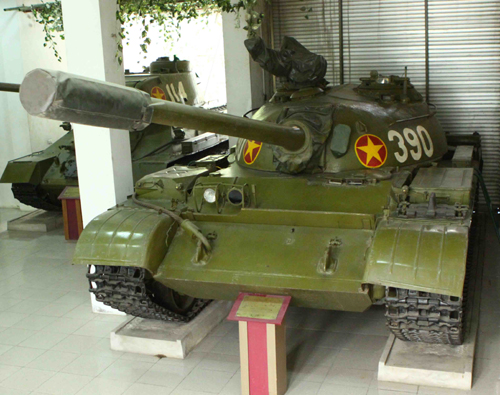
|
|
A T59 tank numbered 390 was used in the Ho Chi Minh Offensive and
advanced into the Independence Palace at noon of April 30, 1975.
It is currently being kept at Hanoi’s Tank – Armour Museum. |
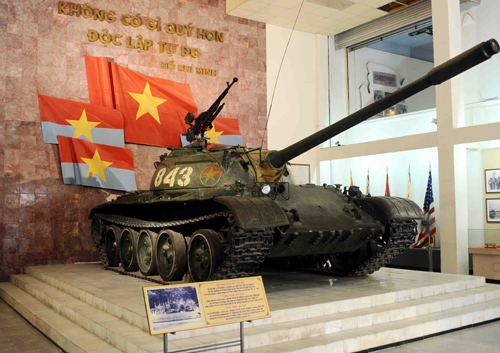 |
|
A T54 tank numbered 843 was used in the Ho Chi Minh Offensive and
it is currently being kept at the Vietnam Military History Museum
in Hanoi. |
 |
|
Dao Thinh bronze jar was one of the containers of the Dong Son
people and it is also symbol of the Dong Son culture. It was discovered
in 1961 in Dao Thinh commune, Tran Yen district, Yen Bai province.
It is currently being kept at the Vietnam National Museum of History
in Hanoi. |
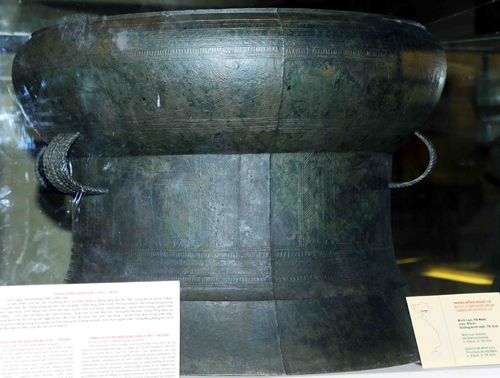 |
|
Ngoc Lu bronze drum is regarded as the most important of the
Dong Son drums. In contrast to most other drums of the Dong Son,
the tympanum bears three concentric panels, which depict animals
or humans, interleaved with bands of geometric or circular patterns.
It is currently being kept at the Vietnam National Museum of History
in Hanoi. |
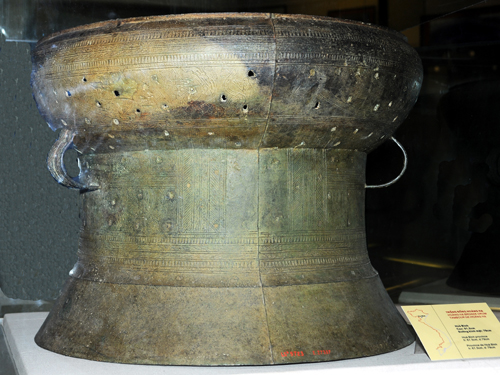 |
|
Hoang Ha bronze drum is a notable specimen of the Dong Son
culture of the Bronze Age that existed in the Red River Delta in
approximately the first five centuries BCE. It was discovered in
March 1937 in Hoang Ha commune, Phu Xuyen district, Ha Tay
province (Hanoi at present). It is currently being kept at
the Vietnam National Museum of History in Hanoi. |
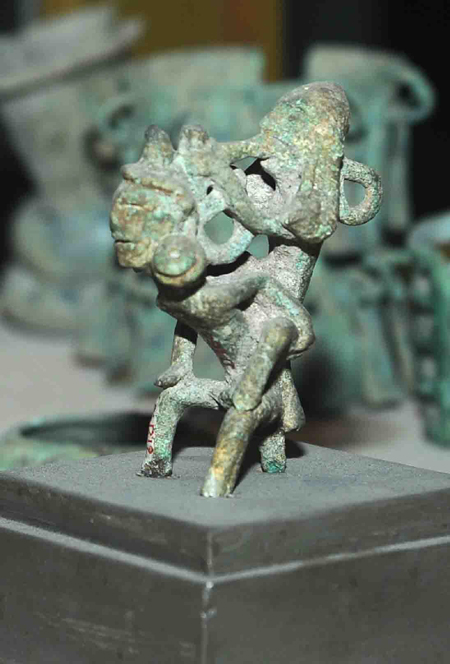 |
|
Bronze statue of a panpipe-playing couple piggybacking is from
Dong Son culture. It is 8.5cm tall, 9.5cm wide, and was made
around 2500-2000 years ago. It is currently being kept at
the Vietnam National Museum of History in Hanoi. |
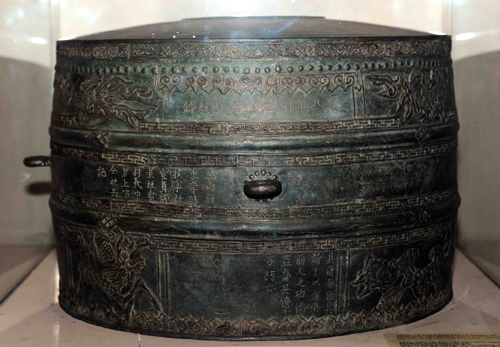 |
|
Canh Thinh bronze drum is a precious heritage from the reign
of Quang Trung. It is currently being kept at the Vietnam National
Museum of History in Hanoi. |
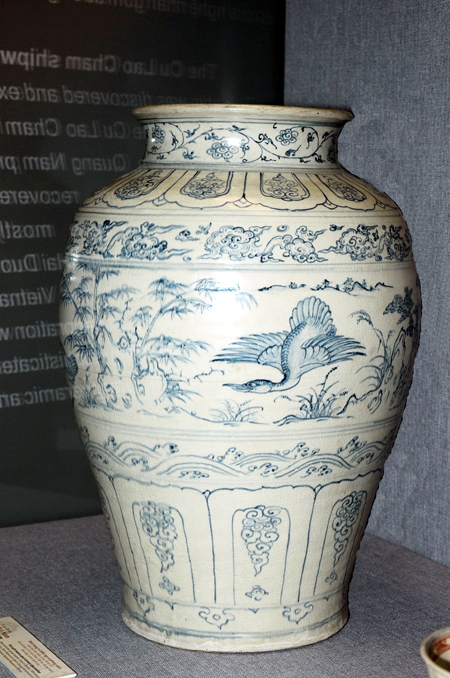 |
|
Pottery jar with swan patterns was discovered in Cu Lao Cham and is
highly appreciated by domestic and foreign researchers. It is currently
being kept at the Vietnam National Museum of History in Hanoi. |
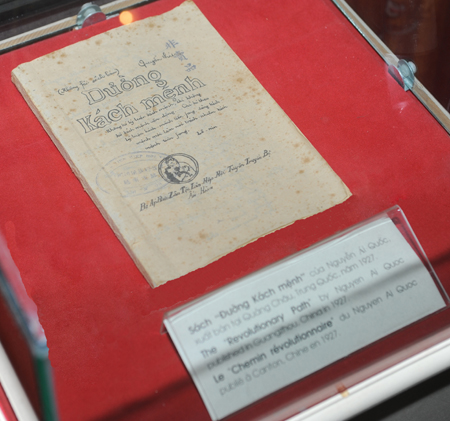 |
|
Đường Kách mệnh (Revolutionary Road) is a book published in 1927
by Nguyen Ai Quoc who would later become President Ho Chi Minh.
The book is about the morality of a Communist person, the political
viewpoints of the author and the path of a revolution. It is currently
being kept at the Vietnam National Museum of History in Hanoi. |
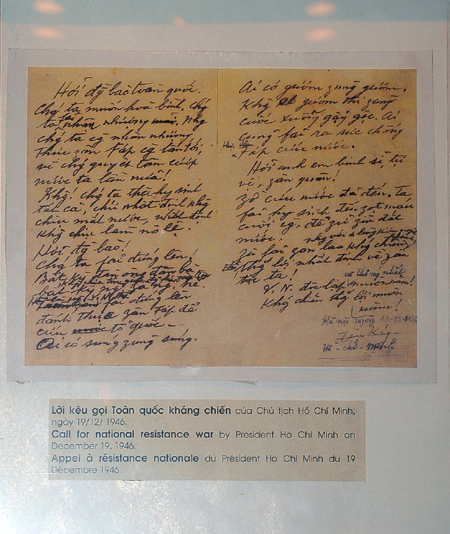 |
|
Handwritten draft of the “Call on the whole nation to carry out the
resistance war”, written by President Ho Chi Minh at the end of 1946,
targeting the French colonialists. Its dimensions are 13.5 cm x 20.5 cm.
It is currently being kept at the Vietnam National Museum of History
in Hanoi. |
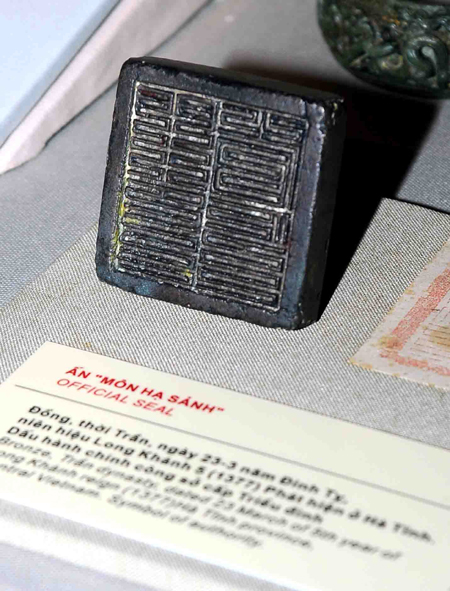 |
|
Bronze royal stamp (Tran Dynasty 1226 – 1400) is currently being
kept at the Vietnam National Museum of History in Hanoi. |